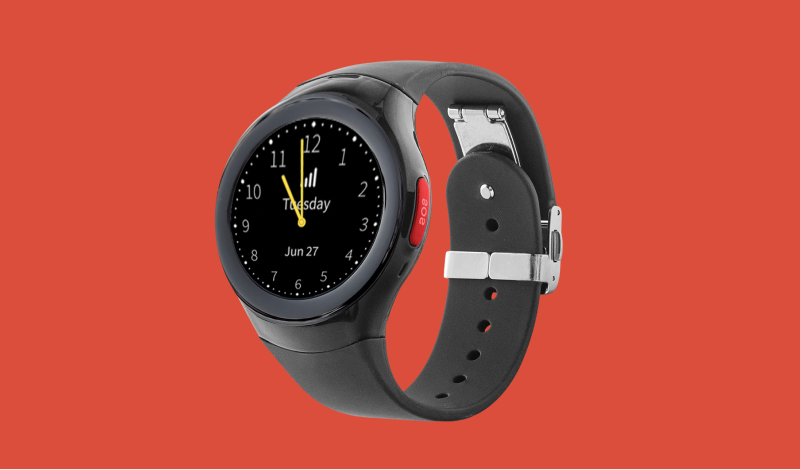What is Medicaid Spend Down and What Expenses Qualify?
August 26, 2024
Navigating the complexities of healthcare in the United States can be challenging, especially when dealing with Medicaid, a program designed to assist low-income individuals and families. One of the more intricate aspects of Medicaid is the “spend down” process, which can be crucial for those who are just above the income eligibility threshold but still require Medicaid coverage.
This post will explain what Medicaid is, who qualifies, what the spend down is, and which expenses can be applied toward it. We’ll also describe the process for documenting your spend down, the frequency of meeting spend down requirements, and alternatives if your state doesn’t offer this option.
What is Medicaid?
Medicaid is a federal and state program that helps with medical costs for some people with limited income and resources. It also offers benefits not typically covered by Medicare, including nursing home care and personal care services. Medicaid is a vital safety net for millions of Americans, providing healthcare access to low-income families, pregnant women, elderly adults, and people with disabilities. Since Medicaid is administered by states according to federal guidelines, the benefits, coverage, and eligibility criteria can vary significantly from one state to another.
What Income Levels Qualify for Medicaid?
Medicaid eligibility is primarily based on income, and the federal government sets baseline eligibility levels. However, individual states can adjust these levels according to their own criteria and needs. Typically, Medicaid is available to those with income up to 138% of the Federal Poverty Level (FPL) in states that expanded Medicaid under the Affordable Care Act (ACA). For non-expansion states, the eligibility levels can be significantly lower.
Let’s take a closer look at the income thresholds in three different states: California, Florida, and Texas.
- California: California is an expansion state, meaning it has adopted the ACA’s expanded Medicaid program. For 2024, an individual adult can qualify for Medicaid with an income up to $20,120 per year, which is 138% of the FPL. For a family of four, the income threshold is about $41,400 annually.
- Florida: Florida is a non-expansion state, and as such, its Medicaid income eligibility is more restrictive. For an individual, the income limit is around $6,600 per year, which is significantly below the FPL. For a family of four, the threshold is about $11,000 annually.
- Texas: Texas, like Florida, has not expanded Medicaid. The income limit for an individual is even lower, roughly $4,000 per year. For a family of four, the income limit is approximately $8,500 annually.
These numbers can change annually, so it’s essential to check your state’s Medicaid website or use the Healthcare.gov tool to determine current eligibility levels in your state. Each state’s Medicaid office provides resources online to help residents determine if they qualify based on their income.
What is a ‘Spend Down’?
A “spend down” is a process that allows individuals whose income is too high to qualify for Medicaid to still become eligible by “spending down” their excess income on medical expenses. The idea is that by using some of their income for medical costs, these individuals lower their remaining income to a level that qualifies them for Medicaid.
For example, suppose a single adult in Florida has an annual income of $9,000, which is above the state’s Medicaid threshold of $6,600. This person may still qualify for Medicaid by spending $2,400 on eligible medical expenses. Once these expenses are documented and verified, the state may provide Medicaid coverage for the remainder of the eligibility period.
How Do You Qualify for a Medicaid Spend Down?
To qualify for a Medicaid spend down, you must first be in a state that offers this program (not all do). The spend down process generally involves the following steps:
- Calculate Your Excess Income: Determine how much your income exceeds the Medicaid eligibility threshold in your state.
- Incur Eligible Medical Expenses: Spend the excess income on qualifying medical expenses. This can include a wide range of healthcare costs, such as doctor visits, prescription drugs, home healthcare, or medical equipment.
- Submit Documentation: You need to provide proof of these medical expenses to your state’s Medicaid office. This could include receipts, invoices, or statements from healthcare providers.
- Review and Approval: The Medicaid office reviews your documentation. If everything is in order, they will adjust your income to reflect the spend down and, if it falls within the eligibility limits, grant you Medicaid coverage.
What Expenses Count Toward the Spend Down?
A variety of medical expenses can count toward your Medicaid spend down. Here are some common examples:
- Medical Bills: Any unpaid medical bills that you are responsible for can be used in the spend down calculation. This includes hospital bills, outpatient services, and doctor’s fees.
- Prescription Drugs: Costs for prescribed medication that are not covered by insurance or other assistance programs can be counted.
- Health Insurance Premiums: If you pay for private health insurance, these premiums can often be included in your spend down.
- Home Healthcare Services: Costs associated with in-home care, such as nursing services or physical therapy, can qualify.
- Medical Equipment: Purchases or rentals of medical equipment like wheelchairs, oxygen tanks, or other necessary devices can be included.
- Transportation Costs: In some states, transportation to and from medical appointments may also count toward the spend down.
It’s crucial to keep detailed records of all these expenses, including receipts and invoices, as you will need to submit them as part of your spend down application.
Is It Complicated to Document Your Spend Down?
Documenting your spend down can be a meticulous process, but it is not necessarily complicated if you stay organized. Here’s what you should do to ensure your documentation is accepted:
- Keep All Receipts: Make sure you keep all receipts and bills related to your medical expenses. Organize them by date and type of expense.
- Use a Log: Consider keeping a log or spreadsheet that tracks each expense, the date it was incurred, the amount, and the type of service or product.
- Submit on Time: States typically have deadlines for submitting spend down documentation. Ensure you know the deadlines and submit your paperwork on time.
- Verify Requirements: Some states may require specific forms or additional documentation, so check with your state’s Medicaid office to ensure you meet all the requirements.
Although it may seem like a lot of work, careful documentation can prevent delays and denials in your Medicaid application.
How Often Do You Need to Meet the Spend Down Requirement?
The frequency with which you need to meet the spend down requirement can vary depending on your state’s policies. Typically, spend down periods are set on a monthly or bi-monthly basis, but some states may allow for a longer period, such as six months.
For example:
- Monthly Spend Down: Some states require you to meet your spend down every month. This means you will need to document and submit your medical expenses monthly to maintain Medicaid coverage.
- Six-Month Spend Down: Other states might allow you to meet your spend down over a longer period, such as six months. In this case, you would accumulate eligible expenses over six months, and once your excess income is spent, you would qualify for Medicaid for the remainder of that period.
Understanding your state’s specific spend down period is crucial to maintaining your Medicaid coverage without interruption.
What If My State Doesn’t Offer the Medicaid Spend Down?
Not all states offer a Medicaid spend down option. If your state does not, there are still several options you can consider to help with healthcare costs.
States that do not typically offer a spend down program include:
- Alabama
- Mississippi
- South Dakota
If you live in one of these states, you might explore the following alternatives:
- Medicare Savings Programs (MSPs): These programs help pay Medicare premiums and, in some cases, may cover Medicare deductibles, coinsurance, and copayments for low-income individuals.
- Long-Term Care Insurance: If you’re primarily concerned about long-term care costs, a long-term care insurance policy might be a worthwhile investment. However, this option requires advance planning, as policies can be costly.
- State-Specific Assistance Programs: Some states have other programs that can help low-income individuals with healthcare costs. These programs may not be as comprehensive as Medicaid but can still offer significant assistance.
- Charitable Organizations and Non-Profits: Various organizations provide assistance with healthcare costs for specific populations or conditions. Research local or national organizations that may offer help.
Alternatives to the Medicaid Spend Down
If you don’t qualify for a Medicaid spend down or if your state doesn’t offer one, there are alternative ways to manage healthcare expenses:
- Medicaid Expansion: In states that have expanded Medicaid under the ACA, the income thresholds are higher, making it easier for more people to qualify without needing a spend down.
- Healthcare Marketplaces: If your income is too high for Medicaid, you may qualify for subsidies to purchase insurance through the ACA marketplace. Depending on your income level, these subsidies can significantly reduce your monthly premiums and out-of-pocket costs.
- Supplemental Security Income (SSI): For those who are elderly or disabled, SSI provides monthly payments to help with basic needs. In many states, qualifying for SSI automatically qualifies you for Medicaid.
- Medicare Extra Help: If you are eligible for Medicare, the Extra Help program can assist with prescription drug costs, reducing the burden of healthcare expenses.
- Local Health Clinics: Federally Qualified Health Centers (FQHCs) and other community health clinics offer services on a sliding fee scale based on your income, providing a more affordable option for primary care









